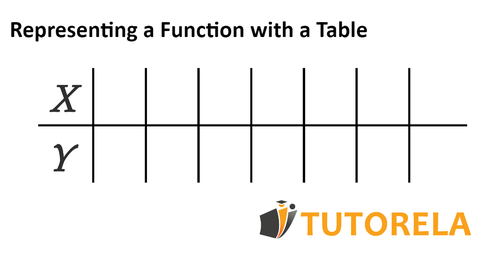Function, describes a correlation or coincidence between a dependent variable () and an independent variable (). The legitimacy of this relationship between the variables is called the " correspondence rule ".
Function Representations Practice Problems & Worksheets
Master verbal, tabular, and algebraic function representations with step-by-step practice problems. Learn correspondence rules and complete function tables.
- Convert verbal function descriptions into algebraic expressions
- Complete function tables using correspondence rules and given equations
- Identify which tables represent valid functions vs non-functions
- Solve for missing X and Y values in function relationships
- Practice with linear, square root, and fractional function forms
- Apply function concepts to real-world scenarios and word problems
Understanding Representing a Function Verbally and with Tables
Verbal representation of a function
The verbal representation of a function expresses the connection between variables verbally, i.e. through a story.
A typical verbal representation of a function can look like this:
- Assuming that Daniel reads all the books he buys that month, the total number of books Daniel reads per year () is a function of the number of books Danny buys each month ().
Tabular representation of a function
A tabular representation of a function is a demonstration of the legitimacy of a function using a table of values (independent variable) and the corresponding values (dependent variable).
In general, a table of values is shown as follows:

Practice Representing a Function Verbally and with Tables
Determine whether the following table represents a linear function
Examples with solutions for Representing a Function Verbally and with Tables
Is the given graph a function?
To determine if the given graph represents a function, we use the vertical line test: if any vertical line intersects the graph at more than one point, the graph is not a function.
Let's apply this test to the graph:
- Examine different sections of the graph by drawing imaginary vertical lines.
- Look for intersections where more than one point exists on the vertical line.
Upon examining the graph, we observe that there are several vertical lines that intersect the graph at multiple points, particularly in areas with loops or overlapping curves. This indicates that at those -values, there are multiple -values corresponding to them.
Since there exist such vertical lines, according to the vertical line test, the graph does not represent a function.
Thus, the solution to this problem is that the given graph is not a function.
Answer:
No
Is the given graph a function?
It is important to remember that a function is an equation that assigns to each element in domain X one and only one element in range Y
Let's note that in the graph:
In other words, there are two values for the same number.
Therefore, the graph is not a function.
Answer:
No
Determine whether the following table represents a function
It is important to remember that a constant function describes a situation where as the X value increases, the function value (Y) remains constant.
In the table, we can observe that there is a constant change in X values, meaning an increase of 1, and a constant change in Y values, meaning an increase of 3
Therefore, according to the rule, the table describes a function.
Answer:
Yes
Determine whether the data in the following table represent a constant function
It is important to remember that a constant function describes a situation where as the X value increases, the function value (Y) remains constant.
In the table, we can observe that there is a constant change in X values, meaning an increase of 1, and a non-constant change in Y values - sometimes increasing by 1 and sometimes by 4
Therefore, according to the rule, the table does not describe a function
Answer:
No
Determine whether the following table represents a constant function
To determine if the table represents a constant function, we need to examine the Y-values corresponding to the X-values given in the table.
- Step 1: Identify the given values from the table. The pairs are as follows: - For , - For , - For ,
- Step 2: Check if all Y-values are the same. Compare Y-values for each X-value: - when , - when , - when .
Since the Y-values (2, 4, and 7) are not the same, the function is not constant.
Thus, the table does not represent a constant function. The correct choice is: No.
Answer:
No